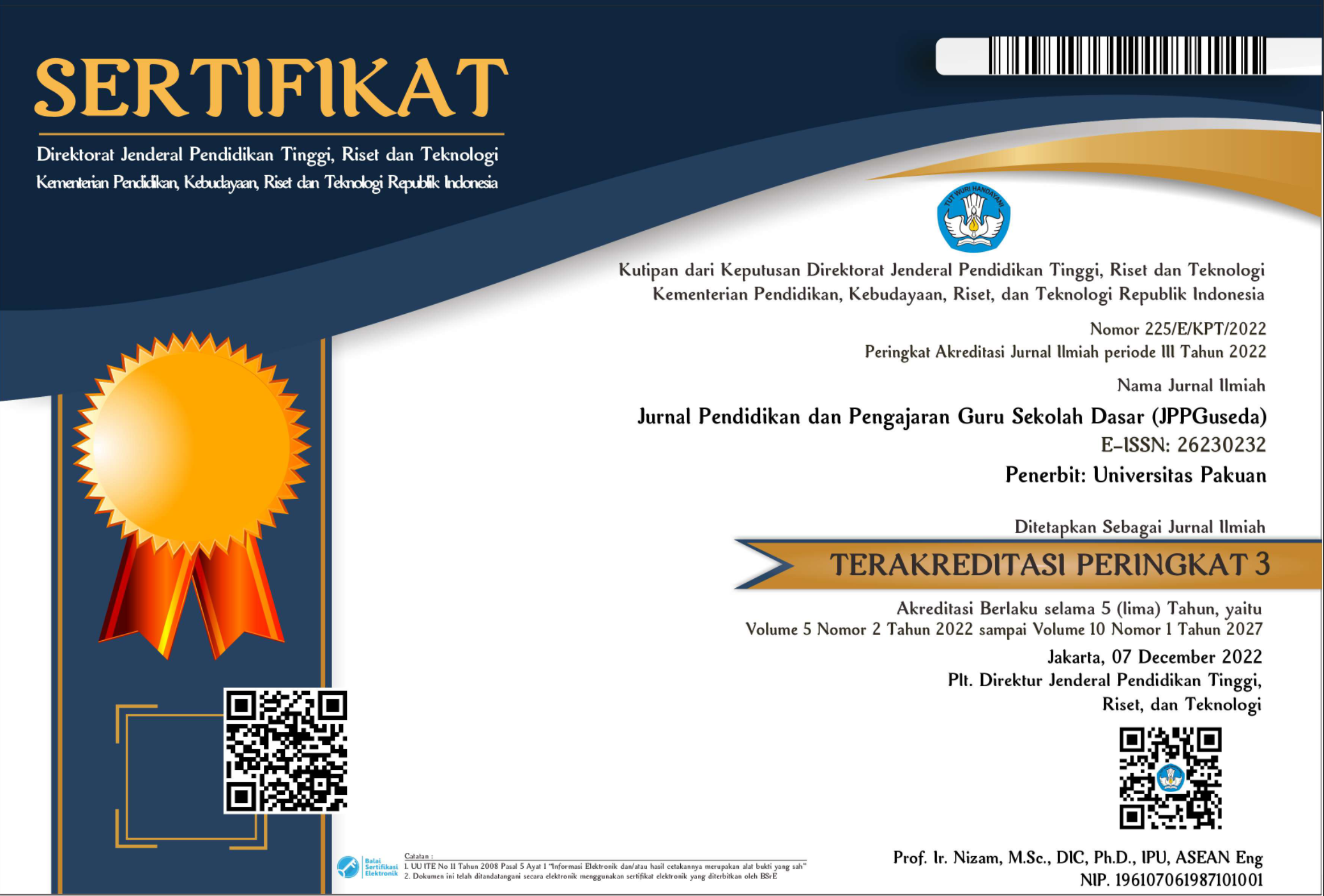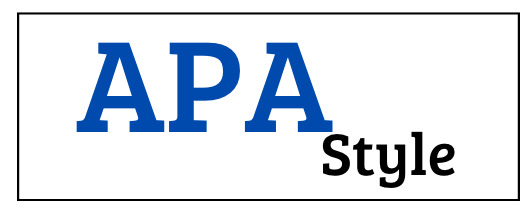PENINGKATAN KETERAMPILAN PROSES SAINS SISWA PADA MATA PELAJARAN IPA KONSEP TEKANAN ZAT CAIR MELALUI PENDEKATAN STEM (SCIENCE TECHNOLOGY ENGINEERING MATHEMATIC) DI KELAS VIII SMPN 4 KOTA BOGOR
Abstract
IMPROVING STUDENTS' SCIENCE PROCESS SKILLS IN IPA SUBJECTS, THE CONCEPT OF LIQUID PRESSURE THROUGH THE STEM (SCIENCE TECHNOLOGY ENGINEERING MATHEMATIC) APPROACH IN CLASS VIII JUNIOR HIGH SCHOOL (SMPN 4 KOTA BOGOR)
This research is a Classroom Action Research by providing action on research subjects in two learning cycles. The low science learning outcomes are due to the lack of variation in teachers using the learning model so that students find it difficult to understand the learning material. This study aims to analyze the application of STEM-based learning in improving science learning outcomes of students at SMPN 4 Bogor. This research is a Classroom Action Research which is carried out in 2 cycles, each cycle is implemented with STEM-based learning. The subjects of this study were 35 students. Data collection techniques through tests and interviews. The data analysis technique used is descriptive analysis. The results of this study show that at the beginning of the observation the average value was only 44.26, in cycle I became 64.40 and cycle II increased significantly to 83.90 . Absorption and Completeness Learning outcomes in the initial observation (observation) before the action were 40.22% and 24.78%, the first cycle showed that the absorption and completeness of the class became 72.45% and 74.89% which were in the very category. medium high in the second cycle the absorption and completeness of the class increased rapidly to 94.76% and 98.32%. It can be concluded that STEM-based learning can improve science learning outcomes. The implication of this research has the impact of creating a learning atmosphere to be more active so that it can improve student learning outcomes.Keywords
References
Lemke, C. 2003. enGauge 21st Century Skills: Digital Literacies for a Digital Age. Neperville, IL: North Central Regional Education Lab.
Y. Suchyadi, N. Safitri, and O. Sunardi, The Use Of Multimedia As An Effort To Improve Elementary Teacher Education Study Program College Students Comprehension Ability And Creative Thinking Skills In Following Science Study Courses,†JHSS (Journal Humanit. Soc. Stud., vol. 04, no. 02, pp. 201205, 2020.
D. Destiana, Y. Suchyadi, and F. Anjaswuri, Pengembangan instrumen penilaian untuk meningkatkan kualitas pembelajaran produktif di sekolah dasar,†J. Pendidik. Pengajaran Guru Sekol. Dasar (JPPGuseda ), vol. 03, no. September, pp. 119123, 2020.
O. Sunardi and Y. Suchyadi, Praktikum Sebagai Media Kompetensi Pedagogik Guru Sekolah Dasar,†J. Pendidik. dan Pengajaran Guru Sekol. Dasar, vol. 03, no. September, pp. 124127, 2020.
Firman, H. 2015. Pendidikan Sains Berbasis STEM: Konsep, Pengembangan, dan Peranan Riset Pascasarjana. Seminar Nasional Pendidikan IPA dan PKLH, Universitas Pakuan Bogor, Indonesia.
Sanders, M. 2009. Integrative STEM Education: Primer. The Technology Teacher, 68(4), hlm.20-27
Bybee, R.W, dkk. 2009. The BSCS 5E Instructional Model: Origins, Effectiveness, and Aplication. Retrieved from: http://www.bscs.org /sites/ default/files/_legacy/BSCS_5E_Instructional Model.
Ritz, J. M. dan S. Fan. 2014. STEM and technology education: International state-of-the-art.Journal International of Technology and Design Education 25(4): 1-23
Hopkins. 1993. Desain Penelitian Tindakan Kelas (Model Ebbut). Yogyakarta : Pustaka Belajar
Mc Niff ,Jean .1992. Action Research: Principles and Practice. London. MacMillan Education Ltd.
Budiana, Sudana, & Suwatra. 2013. Pengaruh Model Creative Problem Solving (CPS) Terhadap Kemampuan Berpikir Kritis Siswapada Mata Pelajaran IPA Siswa Kelas V SD. Mimbar PGSD Undiksha, 1(1).
Bahrum, Wahid, & Ibrahim. 2018. Integration of STEM Education in Malaysia and Why to STEAM. International Journal of Academic Research in Business and Social Sciences, 7(6), 645654
Izati, S. N., Wahyudi, & Sugiyarti, M. 2018. Project Based Learning Berbasis Literasi untukMeningkatkan Hasil Belajar Tematik. Jurnal Pendidikan: Teori, Penelitian, Dan Pengembangan, 3(9), 1122—1127-1127.
Jones, & Zanker, N. P. 2013. Applying laser cutting techniques through horology for teaching effective STEM in design and technology. Design and Technology Education, 18(3), 2134.
Mutakinati, & Anwari. 2018. Analysis OfStudents Critical Thinking Skill Of Middle School Through Stem Education Project-Based Learning. Jurnal Pendidikan IPA Indonesia, 7(1), 5465.
Bahrum, Wahid, & Ibrahim. 2018. Integration of STEM Education in Malaysia and Why to STEAM. International Journal of Academic Research in Business and Social Sciences, 7(6), 645654.
Heldisari, H. 2020. Efektivitas Metode Eurhythmic Dalcroze Terhadap Kemampuan Membaca Ritmis Notasi Musik. Jurnal Ilmiah Pendidikan Dan Pembelajaran, 4(3).
DOI: 10.55215/jppguseda.v4i1.3351
 Abstract views : 1897
Abstract views : 1897
Refbacks
- There are currently no refbacks.
Copyright (c) 2021 Jurnal Pendidikan dan Pengajaran Guru Sekolah Dasar (JPPGuseda)

This work is licensed under a Creative Commons Attribution-NonCommercial 4.0 International License.




















